- No products in the cart.
Lantus SoloSTAR solution and / n / k 100ed / 5 ml 3ml syringe handle piece disposable SoloSTAR
$83.12
Lantus SoloSTAR solution and / n / k 100ed / 5 ml 3ml syringe handle piece disposable SoloSTAR
Description
Composition
Active substance:
1 ml of solution contains: 100 IU insulin glargine (3.6378 mg) ;.
Excipients:
M-cresol (m-cresol) – 2.7 mg Zinc chloride – 0.0626 mg (corresponding to 30 mg of zinc), glycerol (85%) – 20 mg Sodium hydroxide – to pH 4.0 with hydrochloric acid – to pH 4 0 water for injection – up to 1.0 ml.
Description:
Transparent, colorless or nearly colorless liquid.
Product form:
A solution for subcutaneous administration of 100 IU / ml. 3 ml of the drug cartridge of a transparent, colorless glass (type I). Cartridge cork with one hand bromobutyl stopper and crimped aluminum caps, on the other hand – bromobutyl plunger. The cartridge is mounted in a disposable pen SoloSTAR®. 5 injection pens SoloSTAR® together with instructions for use in a cardboard box provided with a cardboard holder.
Contraindications
Increased sensitivity to insulin glargine or to any of the support components of the preparation. Children under 2 years old (no clinical data on the use of)
Carefully
Pregnant women (the possibility of changing insulin requirements during pregnancy and after childbirth).
Indications
Diabetes requiring insulin treatment, in adults, adolescents and children older than 2 years.
Interaction with other drugs
pharmacodynamic interactions
Oral hypoglycemic agents, ACE inhibitors, disopyramide, fibrates, fluoxetine, monoamine oxidase inhibitors, pentoxifylline, propoxyphene, salicylates and sulfa antimicrobial agents – can enhance the hypoglycemic effect of insulin, and increase the susceptibility to the development of hypoglycemia. Simultaneous treatment with insulin glargine dose adjustment may require insulin. – Glucocorticosteroids, danazol, diazoxide, diuretics, glucagon, isoniazid, estrogens and progestins (e.g., hormonal contraceptive), phenothiazine derivatives, somatropin, sympathomimetics (e.g., epinephrine [adrenaline], salbutamol, terbutaline) and thyroid hormones, protease inhibitors, atypical antipsychotics (e.g., olanzapine and clozapine) – may weaken the hypoglycemic effect of insulin. Simultaneous treatment with insulin glargine dose adjustment may require insulin glargine – Beta-blockers, clonidine, lithium salts or alcohol – perhaps both amplification and attenuation hypoglycemic action of insulin. – Pentamidine – in combination with insulin may cause hypoglycemia which is sometimes replaced by hyperglycemia. – Preparations sympatholytic action, such as beta-blockers, clonidine, guanethidine and reserpine – may be reduced or absent kontrregulyatsii adrenergic symptoms (the activation of the sympathetic nervous system) as the development of hypoglycemia.
Pharmaceutical interaction: mixing Lantus® SoloSTAR® with other drugs, including other insulins, as well as drug dilution, the formation of a precipitate or change in time action profile of the drug.
Overdose
Insulin overdose may lead to severe and sometimes long-term hypoglycemia, threatening the patient’s life.
Treatment
Episodes of moderate hypoglycemia typically cropped by ingestion quickly digestible carbohydrates. You may need to change the drug dosing regimen, diet or physical activity. More severe hypoglycemia episodes, manifested coma, seizures or neurological disorders require intramuscular or subcutaneous injection of glucagon, and intravenous administration of concentrated dextrose (glucose). It may require prolonged use of carbohydrates and professional supervision, as apparent clinical improvement after relapse of hypoglycemia.
pharmachologic effect
Pharmacological group:
Hypoglycemic agent, a long-acting insulin analogue.
Pharmacodynamics:
Insulin glargine is an analogue of human insulin, recombinant DNA obtained by the bacterium Escherichia coli (strain K12) and characterized by low solubility in neutral medium. The composition SoloSTAR® Lantus® insulin glargine completely soluble, provided that an acidic reaction solution for injection (pH 4). After administration subcutaneous fat acidic reaction solution is neutralized, leading to the formation mikropretsipitatov of which is constantly released small amounts of insulin glargine, providing predictable, smooth (without peaks) profile curve “concentration-time”, as well as a prolonged action drug. Insulin glargine is metabolized to two active metabolites M1 and M2 (see. The section “Pharmacokinetics”).
Communication with insulin receptors: kinetics of binding to specific receptors of insulin in insulin glargine and its metabolites M1 and M2 is very close to that of human insulin, and therefore the insulin glargine is capable of biological action similar to that of endogenous insulin. The most important action of insulin and its analogues, including insulin glargine, is regulation of glucose metabolism. Insulin and its analogs lower blood glucose concentrations in stimulating glucose uptake by peripheral tissues (especially skeletal muscle and adipose tissue) and inhibition of glucose production in the liver. Insulin inhibits lipolysis in adipocytes and inhibit proteolysis, simultaneously increasing protein synthesis. Prolonged action insulin glargine directly associated with reduced rate of absorption, allowing to use the drug once a day. After subcutaneous administration, the beginning of its action occurs after an average of 1 hour.
The average duration of action is 24 hours, the maximum – 29 hours duration of action of insulin and its analogues such as insulin glargine may vary considerably from patient to patient or from the same patient.. It was shown the effectiveness of the drug Lantus SoloSTAR in children older than 2 years with type 1 diabetes. The children in the age group 2-6 years, the incidence of hypoglycemia with clinical manifestations with insulin glargine was numerically lower both during the day and at night, compared with the use-isophane insulin (respectively average 25.5 episodes against 33.0 episodes in one patient for one year). When the five-year monitoring of patients with type 2 diabetes, no significant differences in the progression of diabetic retinopathy in the treatment of insulin glargine in comparison with insulin, isophane. Communication with the receptors of insulin-like growth factor 1 (IGF-1) affinity insulin glargine receptor IGF-1 is about 5 – 8 times higher than that of human insulin (but approximately 70 – 80 times lower than that of IGF-1), at the same time, compared with human insulin, insulin glargine at metabolites M1 and M2 affinity for the IGF-1 receptor was somewhat less.
Total therapeutic concentrations of insulin (insulin glargine and its metabolites) defined in patients with type 1 diabetes was significantly lower than the concentration required for half maximal binding to receptors of IGF-1 and subsequent activation mitogenically-proliferative pathways triggered through receptors of IGF-1. Physiological concentrations of endogenous IGF-1 may activate mitogenno- proliferative way, however, therapeutic insulin concentrations determined with insulin therapy including treatment with Lantus SoloSTAR significantly below pharmacological concentrations required for activation mitogenically-proliferative path. ORIGIN study (Outcome Reduction with Initial Glargine INtervention) was an international, multicenter, randomized study conducted in 12537 patients c high risk of developing cardiovascular disease and impaired fasting glucose (IFG), impaired glucose tolerance (IGT) or early stage diabetes type 2 diabetes. Study participants were randomized (1: 1), the group of patients receiving insulin glargine (n = 6264) which titrated to achieve fasting blood glucose (FBG)
Secondary endpoints were mortality from any cause and a composite indicator of microvascular outcomes. ORIGIN study showed that treatment with insulin glargine compared with standard glycemic control did not alter the risk of developing cardiovascular disease or cardiovascular mortality; There were no differences in terms of all the components constituting the endpoints, all-cause mortality, combined outcome of microvascular outcomes. The median baseline HbA1c values was 6.4%. Median HbA1c index values during treatment is in the range 5,9-6,4% in the insulin glargine and 6,2-6,6% in the standard treatment group throughout the observation period. In patients receiving insulin glargine, the incidence of severe hypoglycemia episode was 1.05 per 100 patient-years of therapy, and in patients treated with standard therapy hypoglycemic – 0.30 episode per 100 patient-years of therapy. The incidence of non-severe hypoglycemia was the group of patients who received insulin glargine, 7.71 episodes per 100 patient-years of therapy, and in patients treated with standard therapy hypoglycemic – 2.44 episode per 100 patient-years of therapy. The study duration of 6 years, 42% of patients in the group treated with insulin glargine, There were no cases of hypoglycemia. Median body weight changes compared with the outcome of the last visit of the treatment was 2.2 kg higher in the insulin glargine than in the standard treatment group.
Pharmacokinetics:
Comparative study glargine insulin concentrations and insulin isophane-serum in healthy people and patients with diabetes mellitus after subcutaneous administration of the preparations showed a slower and much more prolonged absorption and lack of concentration peak in insulin glargine compared with insulin-izofanom. When during the day a single subcutaneous injection SoloSTAR® Lantus® insulin glargine equilibrium concentration in the blood is achieved after 2-4 days with daily administration. When half-lives of intravenously administered insulin glargine and human insulin were comparable. With the introduction of insulin glargine in the abdomen, arm or thigh were no significant differences in insulin concentrations in the blood serum. Compared with human insulin intermediate-acting insulin glargine characterized by a lower variability of the pharmacokinetic profile, as in the same or in different patients. In humans in subcutaneous adipose tissue insulin glargine partially cleaved from the carboxyl terminus (C-terminus) the beta chain to form two active metabolite M1 (21A -Gly-insulin) and M2 (21A -Gly-des-30B -Thr-insulin ). Advantageously, the plasma circulating metabolite M1. Systemic exposure metabolite M1 increases with increasing dose. Comparison of the pharmacokinetics and pharmacodynamics data showed that the effect of the drug is mainly carried out due to systemic exposure metabolite M1. The vast majority of patients are not able to detect insulin glargine and M2 metabolite in the systemic circulation. When still could be detected in the blood of insulin glargine and M2 metabolite concentrations were not dependent on the administered dose of the drug Lantus SoloSTAR.
Pharmacokinetics in special patient groups
Age and gender: the information on the effect of age and gender on the pharmacokinetics of insulin glargine no. However, these factors did not cause differences in safety and efficacy
Smoking: In the framework of clinical studies on subgroup analysis showed no differences in safety and efficacy of insulin glargine for this group of patients compared with the general population
Obesity: patients has not been demonstrated with obesity are no differences in safety and efficacy of insulin glargine and insulin isophane, compared to patients with normal body weight
Pharmacokinetics in children: children with type 1 diabetes between the ages of 2 and 6 years the concentration of insulin glargine and its main metabolites M1 and M2 plasma before administration of the next dose were similar to those in adults, suggesting no accumulation of insulin glargine and its metabolites in the constant use of insulin glargine in children.
Pregnancy and breast-feeding
Patients should inform the doctor about current or planned pregnancy. No randomized controlled clinical studies on the use of insulin glargine in pregnant women. A large number of observations (1000 outcome pregnancies retrospective and prospective observation) at posmarketingovom application of insulin glargine demonstrated its lack of any specific effects on the course and outcome of pregnancy or the fetus or newborn health. Furthermore, to evaluate the safety of insulin glargine and Insulin Isophane in pregnant women with previously held or gestational diabetes was performed meta-analysis of eight observation of clinical trials, which included women who during pregnancy used insulin glargine (n = 331) and isophane insulin (n = 371). This meta-analysis showed no significant differences regarding the safety with regard to the health of mothers and newborns with insulin glargine and insulin, isophane during pregnancy. In animal studies, no direct or indirect evidence has been obtained about the embryotoxic or foetotoxic effect of insulin glargine. For patients with previously held or gestational diabetes is important during pregnancy to maintain adequate regulation of metabolic processes, in order to prevent the occurrence of undesirable outcomes associated with hyperglycemia. Lantus® SoloSTAR® can be used during pregnancy if clinically indicated. Insulin requirements may be reduced in the first trimester of pregnancy and, in general, increase in the second and third trimesters. Immediately after delivery, insulin requirements decreases rapidly (increased risk of hypoglycaemia). In these conditions is essential careful control of blood glucose concentration. Patients during lactation may require adjustment of insulin dosage regimen and diet.
Conditions of supply of pharmacies
Prescription.
side effects
The following adverse reactions (HP) presented by body system (according to the classification of the Medical dictionary for regulatory activities (MedDRA)) in the following description complies gradation frequency of occurrence: very often (> 10%); often (> 1%; 0.1%; 0.01%;
Violations by the metabolism and nutrition
Very common: hypoglycaemia. Hypoglycemia, the most common adverse reaction when insulin may occur if the insulin dose is too high compared to the need for it. Symptoms of hypoglycaemia usually occur suddenly. Often, however, against the backdrop of neuropsychiatric disorders neyroglikopenii (tiredness, unusual tiredness or weakness, decreased ability to concentrate, drowsiness, visual disturbances, headache, nausea, confusion or loss, convulsions) is usually preceded by symptoms of adrenergic kontrregulyatsii (activation simpato- adrenal system in response to hypoglycemia): hunger, irritability, nervous agitation or tremor, anxiety, pallor, “cold” sweat , Tachycardia, expressed palpitations (faster than developing hypoglycaemia and the heavier it is, the signs of adrenergic kontrregulyatsii more pronounced). Attacks of severe hypoglycemia, especially repetitive, can lead to damage to the nervous system. Episodes long and expressed hypoglycemia may endanger the lives of patients, as with an increase in hypoglycemia even death is possible.
Violations by the immune system
Rare: allergic reactions. Immediate type allergic reactions to insulin are rare. Similar reactions to insulin (including insulin glargine) or auxiliary substances can manifest development of generalized skin reactions, angioedema, bronchoconstriction, reduce blood pressure or shock and can thus threaten the patient’s life. The use of insulin can induce the formation of antibodies thereto. The formation of antibodies cross-reactive with human insulin and insulin glargine, is observed with similar frequency in the application-isophane insulin and insulin glargine. In rare cases, the presence of such insulin antibodies may necessitate adjustment of dosing regimen to eliminate the tendency to the development of hypo- or hyperglycemia.
Disorders of the nervous system
Very rare: dysgeusia (taste disturbance or a perversion of sensations).
Violations by the organ of vision
Rare: blurred vision (significant changes in the regulation of blood glucose may cause temporary blurred vision due to changes in tissue turgor and the refractive index of the eye lens); ретинопатия (долгосрочная нормализация содержания глюкозы в крови снижает риск прогрессирования диабетической ретинопатии, однако инсулинотерапия, сопровождающаяся резкими колебаниями концентраций глюкозы в крови, может сопровождаться временным ухудшением течения диабетической ретинопатии). У пациентов с пролиферативной ретинопатией, особенно не получающих лечения фотокоагуляцией, эпизоды тяжелой гипогликемии могут приводить к развитию преходящей потери зрения.
Violations of the skin and subcutaneous tissue
Часто: липодистрофия (у 1–2 % пациентов). Как и при лечении любыми другими препаратами инсулина, в месте инъекций может развиваться липодистрофия, способная замедлить местную абсорбцию инсулина; нечасто: липоатрофия. Постоянная смена мест инъекций в пределах областей тела, рекомендуемых для подкожного введения инсулина, может способствовать уменьшению выраженности этой реакции или предотвратить ее развитие.
Violations by musculoskeletal and connective tissue
Very rare: myalgia.
Общие расстройства и нарушения в месте введения
Часто: реакции в месте введения (3 – 4 %) (покраснение, боль, зуд, крапивница, отек или воспаление). Большинство незначительных реакций в месте введения инсулинов обычно разрешаются в период времени от нескольких дней до нескольких недель. Редко: задержка натрия, отеки (особенно, если интенсифицированная инсулинотерапия приводит к улучшению ранее недостаточного метаболического контроля).
Профиль безопасности для пациентов моложе 18 лет, в общем, подобен профилю безопасности для пациентов старше 18 лет. У пациентов моложе 18 лет относительно чаще возникают реакции в месте введения и кожные реакции (сыпь, крапивница). Данные по безопасности у пациентов моложе 2 лет отсутствуют.
special instructions
Лантус® СолоСтар® не является препаратом выбора для лечения диабетического кетоацидоза. В таких случаях рекомендуется внутривенное введение инсулина короткого действия. В связи с ограниченным опытом применения препарата Лантус® СолоСтар® не было возможности оценить его эффективность и безопасность при лечении пациентов с нарушением функции печени или пациентов со средне-тяжелой или тяжелой почечной недостаточностью. У пациентов с нарушением функции почек потребность в инсулине может уменьшиться в связи с замедлением его элиминации. У пожилых пациентов прогрессирующее ухудшение функции почек может привести к стойкому снижению потребности в инсулине. У пациентов с тяжелой печеночной недостаточностью потребность в инсулине может быть понижена в связи со снижением способности к глюконеогенезу и замедлением биотрансформации инсулина. В случае недостаточного контроля концентрации глюкозы в крови, а также при наличии тенденции к развитию гипо- или гипергликемии, прежде чем приступать к коррекции режима дозирования, следует проверить точность выполнения предписанной схемы лечения, соблюдение указаний в отношении мест введения препарата и правильность техники проведения подкожных инъекций, а также учитывать все другие факторы, которые могут повлиять на концентрацию глюкозы в крови
Гипогликемия: время развития гипогликемии зависит от профиля действия используемых инсулинов и может, таким образом, изменяться при смене схемы лечения. Вследствие увеличения времени поступления в организм инсулина длительного действия при использовании препарата Лантус® СолоСтар®, следует ожидать меньшей вероятности развития ночной гипогликемии, тогда как в ранние утренние часы эта вероятность развития гипогликемии выше. При возникновении гипогликемии у пациентов, получающих лечение препаратом Лантус® СолоСтар®, следует учитывать возможность замедления выхода из состояния гипогликемии в связи с пролонгированным действием инсулина гларгина. Пациентам, у которых эпизоды гипогликемии могут иметь особое клиническое значение, таким как пациенты с выраженным стенозом коронарных артерий или сосудов головного мозга (риск развития кардиальных и церебральных осложнений гипогликемии), а также пациентам с пролиферативной ретинопатией, особенно, если им не проводилось лечение фотокоагуляцией (риск преходящей потери зрения вслед за гипогликемией), следует соблюдать особую осторожность и интенсифицировать мониторинг концентрации глюкозы в крови. Пациенты должны быть предупреждены о состояниях, при которых симптомы-предвестники гипогликемии могут изменяться, становиться менее выраженными или отсутствовать: при заметном улучшении регуляции концентрации глюкозы в крови; при постепенном развитии гипогликемии; у пациентов пожилого возраста; при переводе пациента с инсулина животного происхождения на человеческий инсулин; при вегетативной нейропатии; при длительном анамнезе сахарного диабета; при наличии у пациентов психических расстройств; сопутствующее лечение другими лекарственными- препаратами (см. «Взаимодействие с другими лекарственными средствами»). Такие ситуации могут приводить к развитию тяжелой гипогликемии (с возможной потерей сознания) до того, как пациент осознает, что у него развивается гипогликемия. В случае если отмечаются нормальные или сниженные показатели гликозилированного гемоглобина, необходимо учитывать возможность развития повторяющихся нераспознанных эпизодов гипогликемии (особенно в ночное время). Соблюдение пациентами схемы дозирования и режима питания, правильное введение инсулина и знание симптомов-предвестников гипогликемии способствуют существенному снижению риска развития гипогликемии. Факторы, повышающие склонность к гипогликемии, при наличии которых требуется особенно тщательное наблюдение и может быть необходима коррекция дозы инсулина: смена места введения инсулина; повышение чувствительности к инсулину (например, при устранении стрессовых факторов); непривычная, повышенная или длительная физическая активность; интеркуррентные заболевания, сопровождающиеся рвотой, диареей; нарушение диеты и режима питания; пропуск приема пищи; потребление алкоголя (этанола); некоторые некомпенсированные эндокринные нарушения (например, гипотиреоз, недостаточность аденогипофиза или коры надпочечников); сопутствующее лечение некоторыми другими лекарственными средствами (см. раздел «Взаимодействие с другими лекарственными средствами»).
Интеркуррентные заболевания: при интеркуррентных заболеваниях требуется более интенсивный контроль концентрации глюкозы в крови. Во многих случаях показано проведение анализа на наличие кетоновых тел в моче, также часто требуется коррекция режима дозирования инсулина. Потребность в инсулине нередко возрастает. Пациенты с сахарным диабетом 1 типа должны продолжать регулярное потребление, по крайней мере, небольшого количества углеводов, даже если они способны потреблять пищу лишь в малых объемах или вообще не могут есть или если у них имеется рвота и т.п., и они никогда не должны совсем прекращать введение инсулина.
Рекомендации по обращению с препаратом При хранении препарата Лантус® СолоСтар® в холодильнике следует следить за тем, чтобы контейнеры непосредственно не соприкасались с морозильным отсеком или замороженными упаковками. Перед первым использованием шприц-ручку Лантус® СолоСтар® необходимо выдержать при комнатной температуре 1-2 часа. Используемые одноразовые шприц-ручки СолоСтар® следует хранить при температуре не выше 30 °C, защищать от воздействия света. Предварительно заполненную шприц-ручку СолоСтар® не охлаждать. Срок годности препарата в одноразовой шприц-ручке СолоСтар® после первого использования – 4 недели. Рекомендуется отмечать на этикетке дату первого введения препарата.
Storage conditions
При температуре от 2 C до 8 C в защищенном от света месте. Не замораживать! Keep out of the reach of children!.
Dosing and Administration
Общие рекомендации
Лантус® СолоСтар® следует вводить подкожно 1 раз в сутки в любое время дня, но каждый день в одно и то же время. У пациентов с сахарным диабетом 2 типа Лантус® СолоСтар® может применяться, как в виде монотерапии, так и в комбинации с другими гипогликемическими препаратами. Целевые значения концентрации глюкозы в крови, а также дозы и время введения или приема гипогликемических препаратов должны определяться и корректироваться индивидуально. Коррекция дозы также может потребоваться, например, при изменении массы тела пациента, его образа жизни, изменении времени введения дозы инсулина или при других состояниях, которые могут увеличить предрасположенность к развитию гипо- или гипергликемии (см. разделы «Особые указания»). Любые изменения дозы инсулина должны проводиться с осторожностью и под медицинским наблюдением. Препарат Лантус® СолоСтар® не является инсулином выбора для лечения диабетического кетоацидоза. В этом случае предпочтение следует отдавать внутривенному введению инсулина короткого действия. При схемах лечения, включающих инъекции базального и прандиального инсулина, для удовлетворения потребности в базальном инсулине обычно вводится 40-60% от суточной дозы инсулина в виде инсулина гларгина. У пациентов с сахарным диабетом 2 типа, принимающих гипогликемические препараты для приема внутрь, комбинированная терапия начинается с дозы инсулина гларгина 10 ЕД один раз в сутки и в последующем схема лечения корректируется индивидуально. У всех пациентов с сахарным диабетом рекомендуется мониторинг концентрации глюкозы в крови.
Переход с лечения другими гипогликемическими препаратами на Лантус® СолоСтар®
При переводе пациента со схемы лечения с применением инсулина средней продолжительности действия или длительного действия на схему лечения с применением препарата Лантус® СолоСтар® может потребоваться коррекция количества (доз) и времени введения инсулина короткого действия или его аналога в течение суток или изменение доз пероральных гипогликемических препаратов. При переводе пациентов с однократного в течение суток введения инсулина-изофана на однократное в течение суток введение препарата Лантус® СолоСтар® начальные дозы инсулина обычно не изменяются (то есть применяется количество ЕД препарата Лантус® СолоСтар® в сутки равное количеству МЕ инсулина-изофана в сутки). При переводе пациентов с двукратного в течение суток введения инсулина-изофана на однократное введение препарата Лантус® СолоСтар® перед сном с целью снижения риска развития гипогликемии в ночное и раннее утреннее время начальная суточная доза инсулина гларгина обычно уменьшается на 20% (по сравнению с суточной дозой инсулина-изофана), а затем она корректируется в зависимости от реакции пациента. Лантус® СолоСтар® не следует смешивать с другими препаратами инсулина или разводить. Необходимо убедиться, чтобы в шприцах не содержалось остатков других лекарственных средств. При смешивании или разведении может измениться профиль действия инсулина гларгина во времени. При переходе с человеческого инсулина на препарат Лантус® СолоСтар® и в течение первых недель после него рекомендуется тщательный метаболический мониторинг (контроль концентрации глюкозы в крови) под медицинским наблюдением, с коррекцией при необходимости режима дозирования инсулина. Как и при применении других аналогов человеческого инсулина, это особенно относится к пациентам, которые вследствие наличия у них антител к человеческому инсулину нуждаются в применении высоких доз человеческого инсулина. У таких пациентов при применении инсулина гларгина может наблюдаться значительное улучшение реакции на введение инсулина. При улучшении метаболического контроля и обусловленного этим повышения чувствительности тканей к инсулину может возникнуть необходимость коррекции режима дозирования инсулина.
Смешивание и разведение
Препарат Лантус® СолоСтар® нельзя смешивать с другими инсулинами. Смешивание может изменить соотношение время/действие препарата Лантус® СолоСтар®, а также привести к выпадению осадка.
Children
Препарат Лантус® СолоСтар® может применяться у детей старше 2- летнего возраста. Применение у детей младше 2 лет не изучалось.
Elderly patients
У пациентов пожилого возраста с сахарным диабетом, рекомендуется применение умеренных начальных доз, медленное их увеличения и применение умеренных поддерживающих доз.
Mode of application
Препарат Лантус® СолоСтар® вводится в виде подкожных инъекций. Препарат Лантус® СолоСтар® не предназначен для внутривенного введения. Длительная продолжительность действия инсулина гларгина наблюдается только при его введении в подкожно-жировую клетчатку. Внутривенное введение обычной подкожной дозы может вызвать тяжёлую гипогликемию. Лантус® СолоСтар® должен вводиться в подкожно-жировую клетчатку живота, плеч или бедер. Места инъекций должны чередоваться при каждой новой инъекции в пределах рекомендуемых областей для подкожного введения препарата. Как и в случае других типов инсулина, степень абсорбции, а, следовательно, начало и продолжительность его действия, могут меняться под воздействием физической нагрузки и других изменений в состояния пациента. Лантус® СолоСтар® – это прозрачный раствор, а не суспензия. Поэтому ресуспендирования перед применением не требуется. При неисправности шприц- ручки Лантус® СолоСтар® инсулин гларгин можно извлечь из картириджа в шприц (пригодный для инсулина 100 МЕ/мл) и сделать необходимую инъекцию.
Information
Appearance may differ from that depicted in the picture. There are contraindications. You need to read the manual or consult with a specialist
Additional information
| Weight | 0.100 kg |
|---|---|
| Manufacturer | SANOFI RUSSIA |

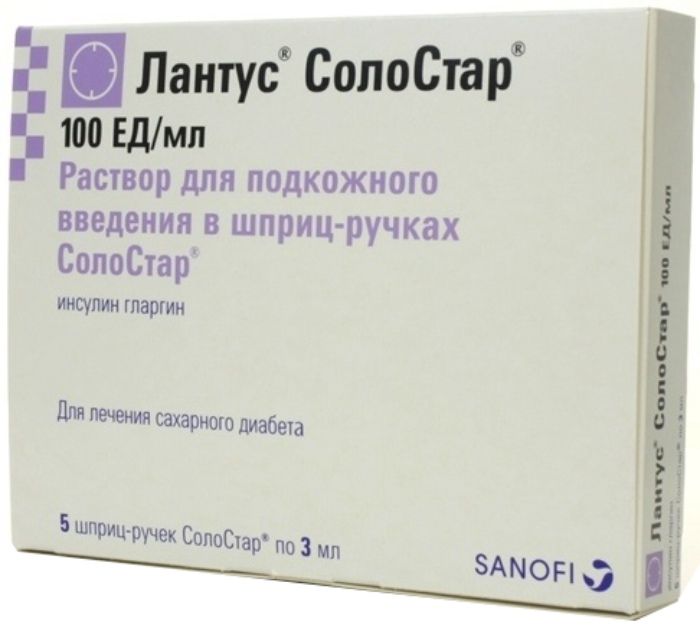

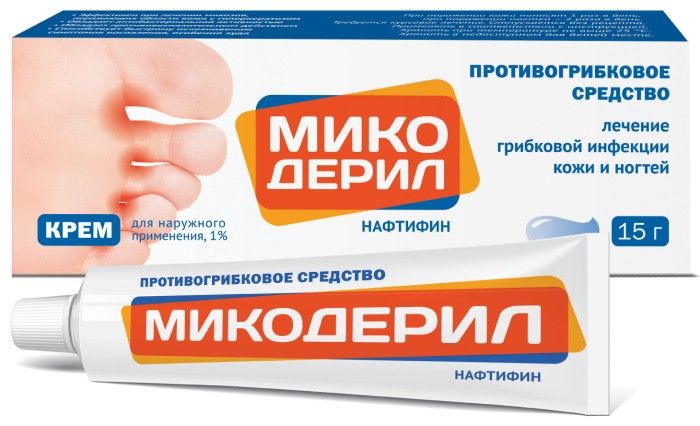
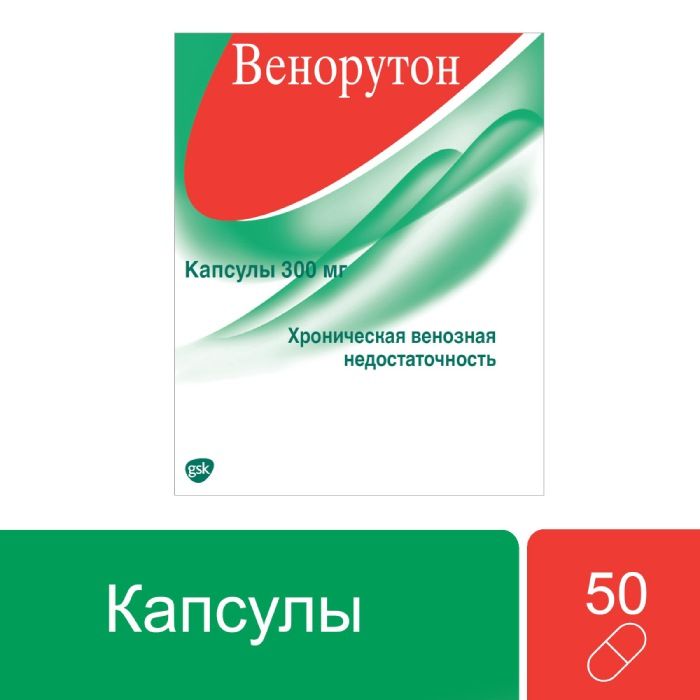

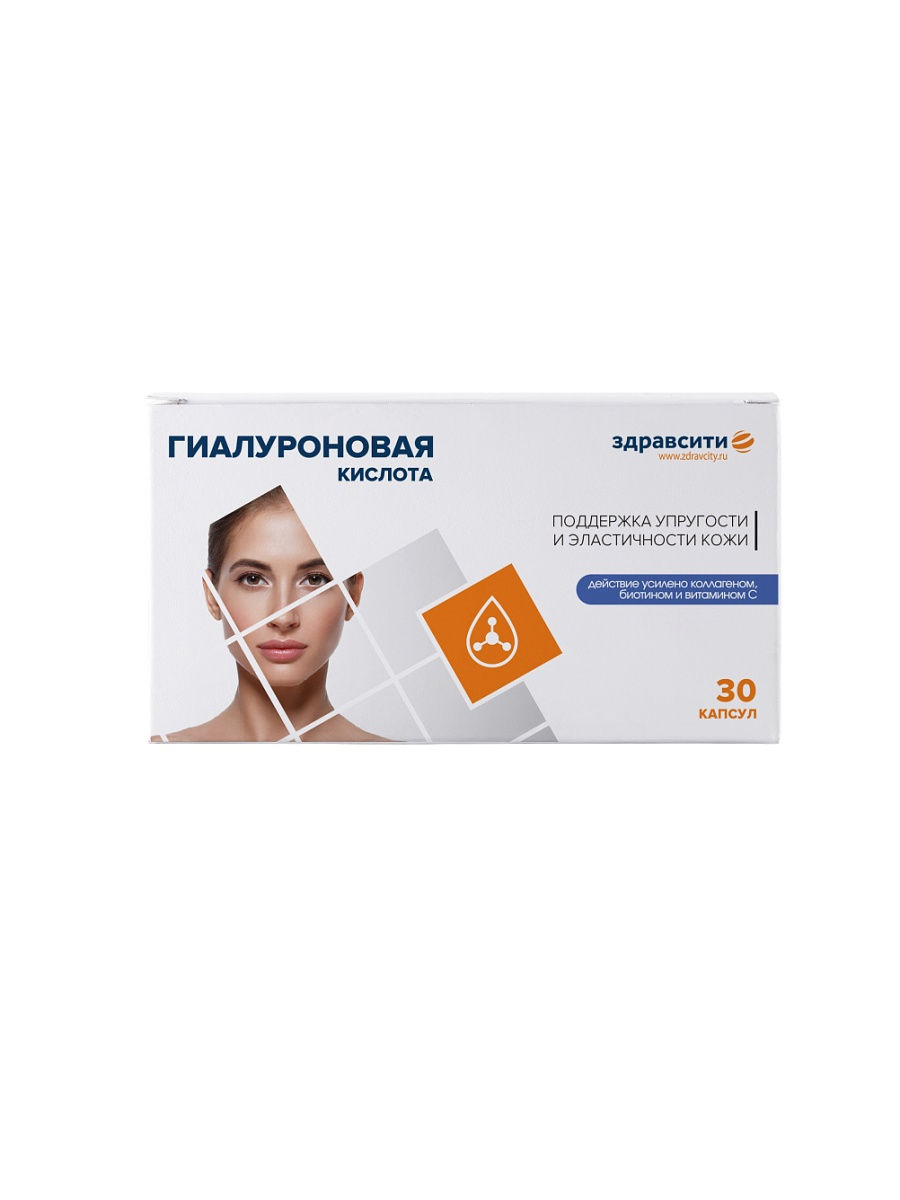

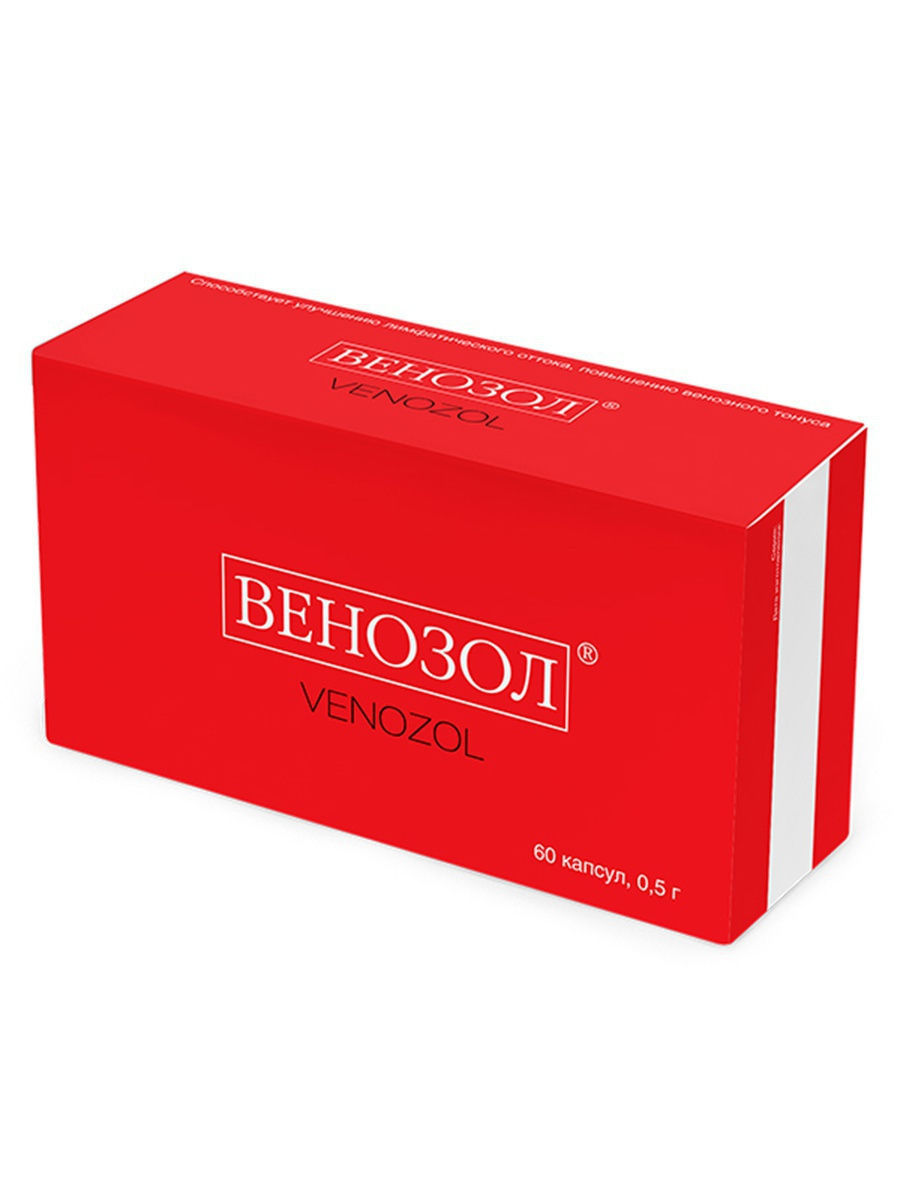
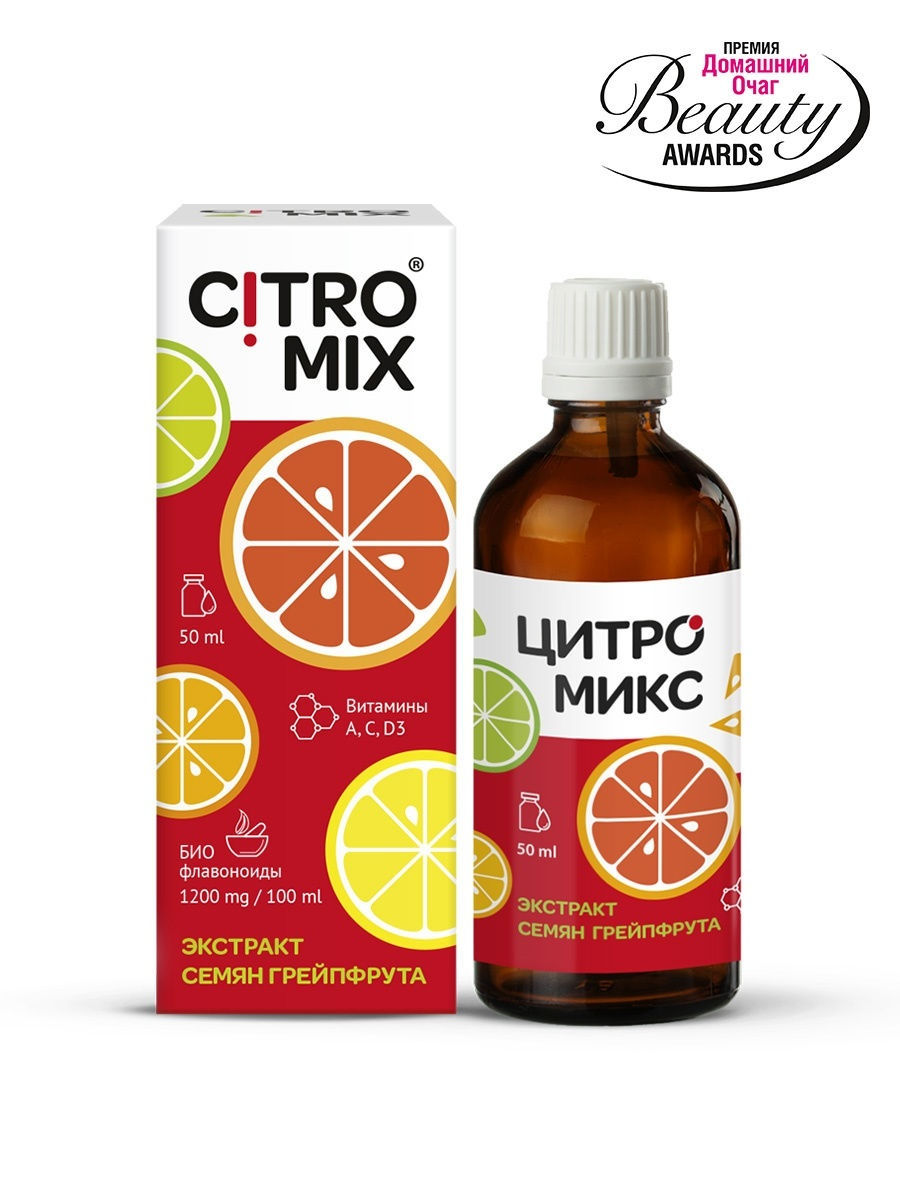




There are no reviews yet.